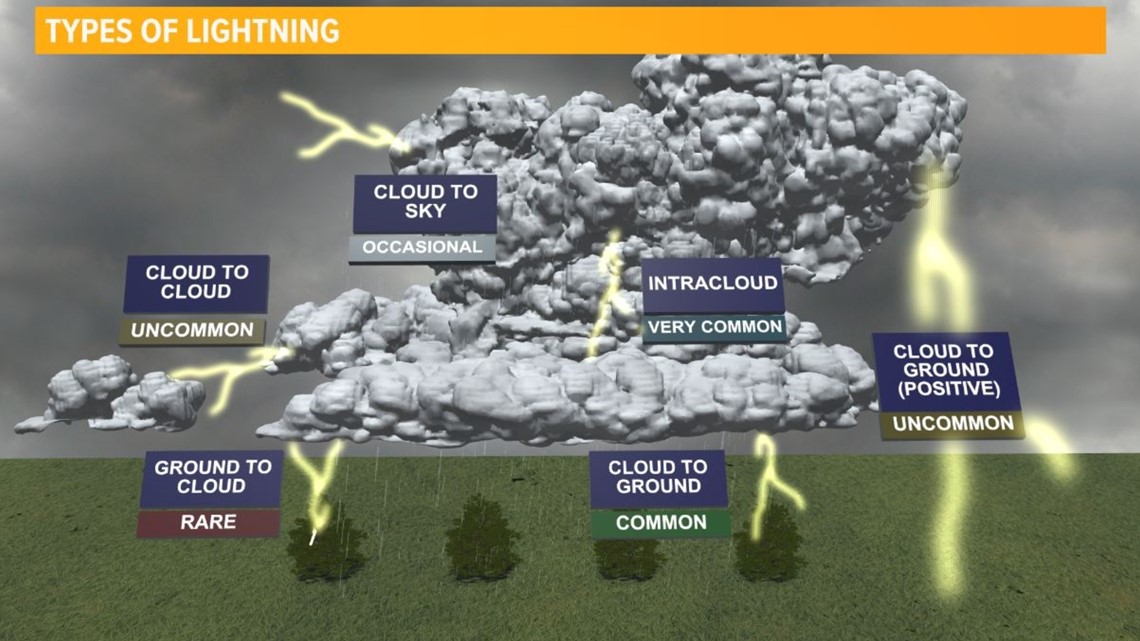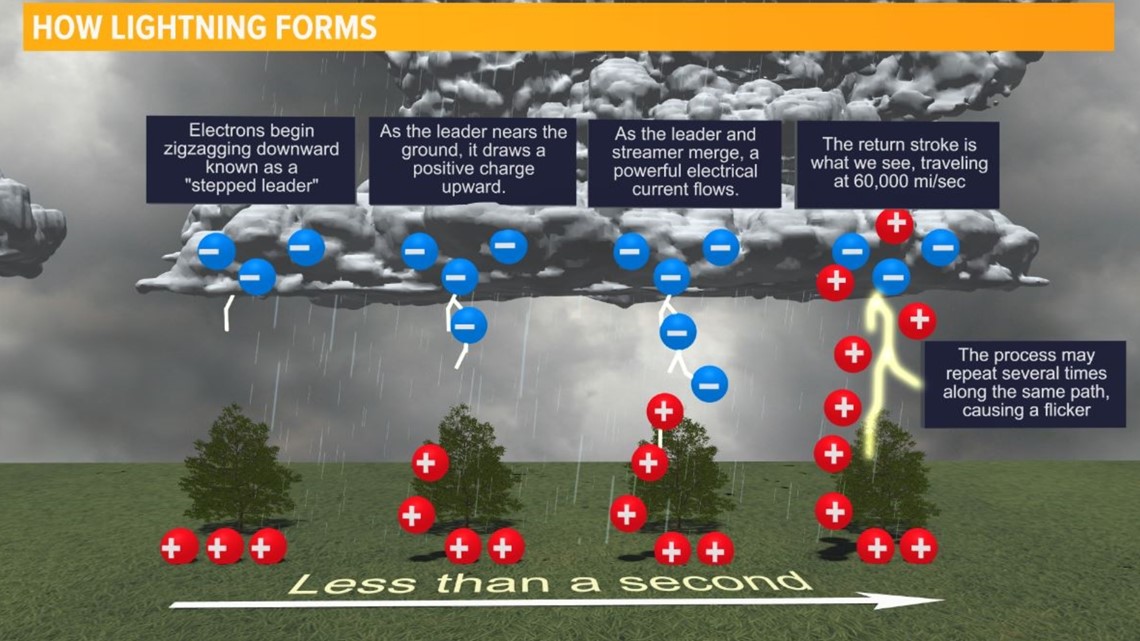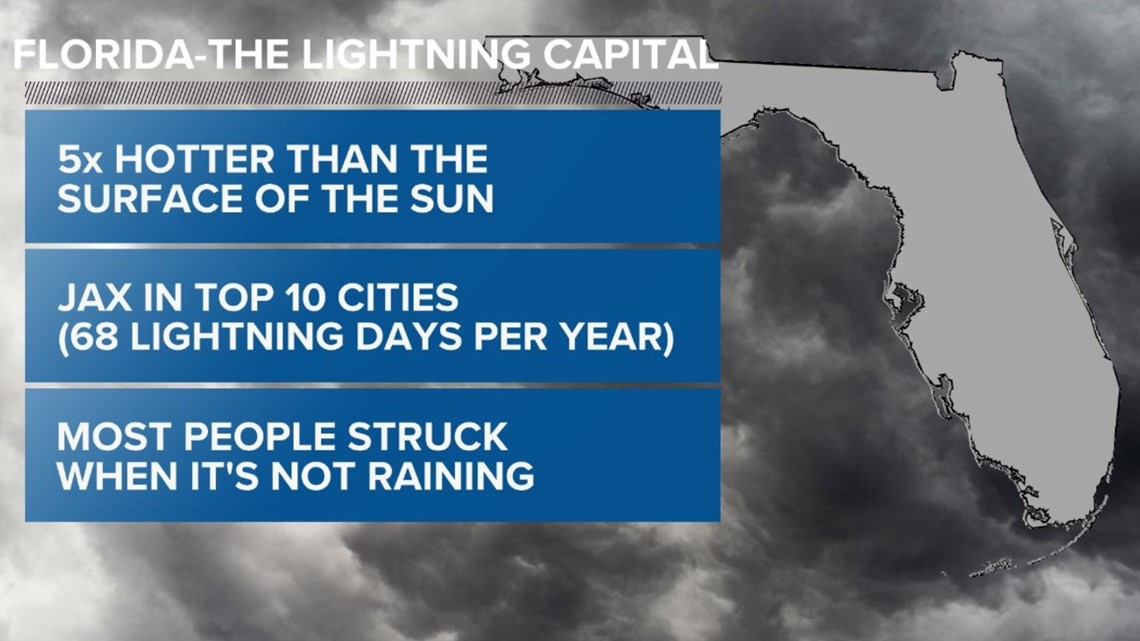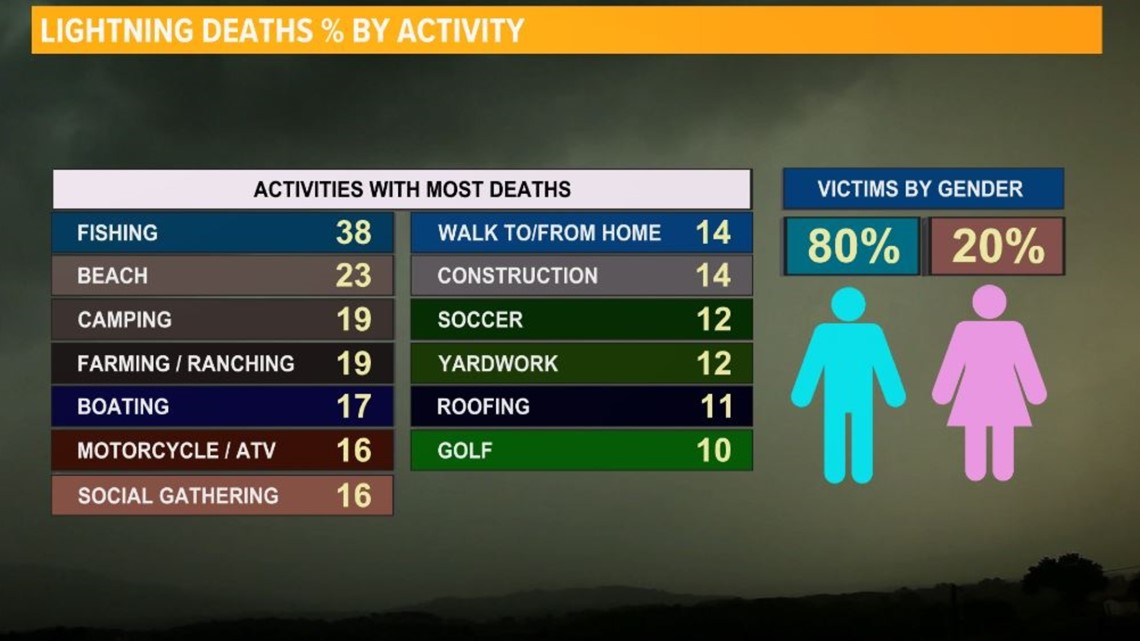JACKSONVILLE, Fla. — July is the month for lightning in the state of Florida! No place outside is safe from lightning, so the best thing you can do to keep yourself and your loved ones protected is to head indoors when thunder roars.
The Sunshine State's combination of warm, coastal waters and summertime heat are two of the main factors for our increased risk and highest concentration of lightning, especially when it comes to July. Sea breezes develop daily and often collide over the peninsula resulting in thunderstorm development.
Florida is the lightning capital of the United States, averaging up to 100 thunderstorm days per year in some areas of the state. Specifically, Jacksonville can expect about 68 thunderstorm days per year.
In Florida on average, lightning kills ten and injures 40 people per year. In the U.S. on average, lightning kills 93 and injures 300 per year.
If you can hear thunder, you're close enough to get struck by lightning. Most people are struck by lightning before it starts raining or after it stops raining. Thunder is the result of the rapid heating and expansion of air caused by a lightning flash.
There are different types of lightning, too. Negative cloud-to-ground strikes are the most common. They come from the bottom of the thunderstorm cloud. Their more dangerous counterpart, positive lightning bolts, comes from the top of the anvil cloud and usually strikes the ground on the backside of the storm after the rain has passed. These strikes can come from up to 60,000 feet up in our atmosphere, so just imagine the electrical power it takes to get that bolt all the way to the ground.




Use the 30-30 rule: count the seconds between the lightning and the thunder; 30 seconds or less, take cover! After the storm, wait 30 minutes before leaving shelter.




Can we protect our homes from lightning? Yes, but the methods aren't foolproof. Lightning rods (and the accompanying protection system) are designed to protect a house or building from a direct lightning strike and, in particular, a lightning-initiated fire. Note that lightning protection systems do not prevent lightning from striking the structure, but rather intercept a lightning strike, provide a conductive path for the harmful electrical discharge to follow and disperse the energy safely into the ground

